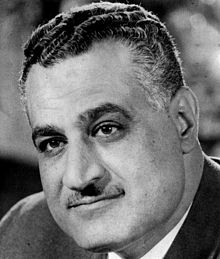Is the Middle East becoming less Arab?
Saturday, 8 November 2014
Hisham Melhem /Al Arabiya
President Obama’s letter to Iran’s supreme leader Ayatollah Ali Khamenei, in which he laid out the foundation of a new relationship emanating from a nuclear compromise, and stressed shared U.S.-Iranian interests in combatting the extremist Islamic State of Iraq and Syria (ISIS), is emblematic of a gradual and subtle shift in Washington’s attitudes towards the region in general and its Arab actors in particular. In this rapidly changing Middle East, the U.S. sees a diminishing Arab influence brought about by the erosion of the state system, lack of political legitimacy, decades of autocracy, and the rise of identity politics that is fueling an unprecedented sectarian bloodletting on a wide front stretching from the Gulf to the Mediterranean.
In this new, not necessarily brave or promising Middle East, where non-state actors like ISIS and Hezbollah are challenging century-old state boundaries, the U.S. finds itself compelled to cooperate and rely more on non-Arab actors, like Iran, the Kurds and to a lesser extent Turkey, to solve what seems to be the intractable problems that the Arabs themselves have created over the years, and yes, made worse with a little help from the U.S. and some in the neighborhood.
The Arab decline?
Analyzing, how the U.S. is leading and conducting the war against ISIS, a savvy European diplomat observed, before the Wall Street Journal revealed Obama’s secret letter to Khamenei, that the U.S. is increasingly tempted to rely on Iran’s considerable influence in Iraq and Syria. While he did not say it explicitly, the implication of his observation is that Iran, directly and or by proxy is the country with the most sway in Iraq, Syria and Lebanon, and that it is on its way to play a similar role in Yemen. The seasoned diplomat noted with fascination America’s increasing reliance on Kurdish muscle to check and repulse ISIS in both Iraq and Syria.
“President Obama has been a dogged suitor in his pursuit of Iran’s affection”
Hisham Melhem
Not only the U.S. is supporting and arming the Iraqi Kurdish Peshmerga, but also aiding and arming the Syrian Kurdish militia the People’s Defense Corps (YPG), which is valiantly defending the town of Kobani in Syria against ISIS’s relentless attacks, even though the YPG is allied with the Turkish Kurdistan Workers’ Party PKK which was designated years ago by the U.S. as a terrorist organization. The rise of Iran’s influence in Iraq and the Levant, its extensive support and collaboration with Shiite militias in the three Arab states, and the increasing assertiveness of Kurdish power and influence in Iraq, Syria and Turkey, their growing, and effective military role in blunting ISIS’s military machine, in northern Iraq and northern Syria signified to the European diplomat that the “Middle East is becoming more Iranian, more Kurdish, more Turkish…” and when I interjected “ and less Arab?” he replied “yes, less Arab”, stressing that he was just describing the new reality. In the last few years, I have written about the diminishing influence of the Arabs in their own world, where they find themselves chafing under the shadows of their more powerful – but not necessarily magnanimous – neighbors.
From states to sects
The depredations of Arab autocrats have gutted their states and societies, lead to the erosion of state authority and weakened the Arab state system that dominated politics and regional rivalries during the decades that followed the Second World War. Arab states competed among themselves and with their non-Arab neighbors for regional leadership and formed alliances with regional non-Arab and outside powers. There was a long Arab cold war, and some short hot ones, Iraq invaded Iran and triggering the longest conventional war in the 20th century. There were five Arab-Israeli wars involving states (including the invasion of Lebanon), although Israel’s recent wars were waged against non-state actors like Hezbollah and Hamas.
Throughout these years the state was the dominant actor, and Arab identity was the prominent one, projecting a veneer of secularism in countries like Egypt, Syria and Iraq, at the expense of the identity (ethnic, linguistic or religious) of other important groups living in majority Arab states. That old Arab world with its clear political and ideological divisions based on rational states competing for leadership that was chronicled by scholars like Malcolm Kerr, Patrick Seale, Michael Hudson, and others, is no more.
Today, Iraq and Syria are convulsed by brutal internal wars and drawing to their maelstrom other Arab actors, Iran, Turkey the U.S. the Europeans and Russia. These states as well as other brittle ones like Yemen, Libya and Lebanon, are being threatened and or controlled by armed militias or very powerful non-state actors like ISIS and Hezbollah. Even old resilient states, like Egypt are no longer cohesive or as strong as they used to be. In 1973 the Egyptian army crossed the Suez Canal, to do battle with the Israeli army occupying Sinai. Today, the Egyptian army is still fighting in Sinai, but today the enemy is a home grown Islamist insurgency.
With the fragmentation of some states, the diminishing appeal and power of the Arab identity, which is being undermined further by rising toxic sectarianism, the category “Arab”, the cultural identity of generations in the modern history of the Arab Middle East, is being sidelined as a category of analysis, and being replaced by more visceral primordial identities such as “Sunnis” and “Shiites”. Ironically, these identities, that are as old as Islam itself, are making the Middle East today more sectarian and “less Arab”.
Iran, the center of the Middle East
President Obama has been a dogged suitor in his pursuit of Iran’s affection. From the beginning of his tenure he extended a friendly hand to the Islamic Republic, only to be greeted with the clenched fist of the leader of supreme rejection. For all of his lofty general rhetoric about a new beginning with the Muslim world, his early –genuine, but tentative- attempts at pursuing peace between the Palestinians and Israelis, his early support for the goals of reforms and empowerment generated initially by the season of Arab uprisings, Obama’s supreme objective in the Middle East was and still is a historic opening to Iran that would be initiated by a nuclear accord that would prevent the Islamic Republic from developing nuclear weapons.
If some Iranians have the tendency to see their country as “the center of the universe“, President Obama views Iran as the center of the Middle East. Last March, Obama told author and journalist Jeffrey Goldberg that Iran is a rational actor seeking to play a major role in the world. One could see a tinge of admiration of Iran in Obama’s observation to Goldberg “What I’ll say is that if you look at Iranian behavior, they are strategic, and they’re not impulsive. They have a worldview, and they see their interests, and they respond to costs and benefits. And that isn’t to say that they aren’t a theocracy that embraces all kinds of ideas that I find abhorrent, but they’re not North Korea. They are a large, powerful country that sees itself as an important player on the world stage, and I do not think has a suicide wish, and can respond to incentives.”
Letters in a bottle
According to the Wall Street Journal “the letter appeared aimed both at buttressing the campaign against Islamic State and nudging Iran’s religious leader closer to a nuclear deal.” The Journal added “Mr. Obama stressed to Mr. Khamenei that any cooperation on Islamic State was largely contingent on Iran reaching a comprehensive agreement with global powers on the future of Tehran’s nuclear program by a Nov. 24 diplomatic deadline.” The letter, along with reports in the Iranian media that the U.S. is willing to be more forthcoming regarding the number of uranium-enriching centrifuges that it will allow Iran to have, shows that the Obama administration is very eager to get a deal, probably more eager than Iran.
However, the most disturbing passage as Fred Hof, one of America’s best analysts of Syria told me, was the one saying that President Obama “sought to assuage Iran’s concerns about the future of its close ally, Bashar al-Assad of Syria” by assuring the Supreme Leader that “the U.S.’s military operations inside Syria aren’t targeted at Mr. Assad or his security forces.” This is the same Iran that has helped the Assad regime build an impressively repulsive portfolio of war crimes and crimes against humanity. President Obama is well aware of what Assad has done to the people of Syria and how Iran has assisted him. As Hof puts it “The President of the United States should be the last person on earth to assure the Supreme Leader that his criminal client is immune. Principle and decency aside, such an assurance would be bad tactically. Why should the United States worry about Iran and not vice versa? With such an assurance in hand why would the Assad regime exercise any restraint in terms of barrel bombs? How would we expect Iran to react to such an extraordinary attempt to reassure it on Syria?”
According to the WSJ, Obama’s October letter to Khamenei is the fourth since he took power in 2009. There is no indication that Khamenei ever responded to Obama’s repeated entreaties. It is as if the American president is sending his letters in bottles and none of them was picked up by the supreme leader, or if he was given the letters he might as well have stamped them: return to sender.
Vast sea of Sunni anger
The letter, as one Arab diplomat observed is stunning in its total disregard of the feelings of the majority of the people in Syria and the neighboring Arab states at the spectacle of the United States enlisting the Shiite regime in Iran which has been aiding and abetting the anti-Sunni policies of former Iraqi Prime Minister Nuri al-Maliki and Syria’s Assad. For the Obama administration to lose sight of this point is instructive since senior military and political leaders have been warning publicly, that the U.S. should not do anything that will deepen the alienation of more than 20 million Sunni Arabs inhabiting the area stretching from Damascus in Syria to Diyala in Iraq. Explaining the administration’s campaign to counter ISIS, deputy national security advisor Tony Blinken stressed the need to address the legitimate grievances of these Sunnis, since “ this is the vast sea in which ISIL swims, and it must inform the combination of determination, patience and humility we bring to the task of defeating it”.
The growing talk of American-Iranian détente, the shared interest in combatting a common enemy like ISIS, and president Obama’s stubborn refusal to accelerate the demise of the Syrian regime have combined to convince many Sunni Arabs that the U.S. is in collusion with Iran in Iraq and Syria, and that Washington is tolerating what amounts to an Iranian suzerainty over Iraq, Syria and Lebanon.
The alienation of the Sunnis of Syria and Iraq has reached a traumatic level leading some of them to throw their lot with ISIS in Iraq and the Sunni extremist Jabhat al-Nusra in Syria. For the U.S. to attack al-Nusra, without actively and seriously working to topple the Assad regime will be seen by a lot of Sunnis in Syria and Lebanon as another U.S. affront to the Sunnis, who see al-Nusra as the major force on the ground fighting the Assad regime, and Hezbollah while being attacked by the U.S. These Sunnis are familiar with al-Nusra’s brutal side, but they are willing to suspend their judgment until the demise of Assad and his regime. The worst thing the U.S. could do now is to drive the Sunnis of Syria and Lebanon to the arms of al-Nusra. Obama’s letter to the supreme leader will do just that.





















